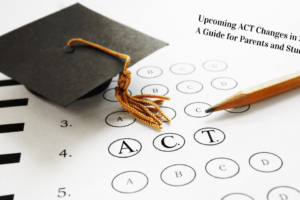
Education with COVID: What Is the New School Year Really Going to Look Like?
As the uncertainty of COVID continues to grow with the media seemingly contradicting itself with the current severity of the disease, so does the uneasiness about what the upcoming school year could look like. Of course, much of the anxiety is based on the dubiousness of just how unsure the administrators across the country are going to try to format the school year and all the classes. Plus, how big of a role are governors going to play in issuing guidelines for school districts to follow?
Social distancing is impossible to do when the classrooms are already up to their maximum occupancy in several instances. Schools don’t just have extra classrooms tucked away, not being used to spread out their students better. Furthermore, they don’t have the additional teachers needed even to try to accomplish lowering class sizes.
What Is the Solution to Teach with the Threat of COVID?
The truth is that no one solution will remedy this situation. What might work for some districts will not work for others. After speaking with several administrators in Illinois, I was provided a few possible outcomes for the upcoming school year. And while they definitely will not make everyone happy, this is a learning process for administrators, educators, parents, and students alike.
Possible Options
One administrator I spoke with said they are contemplating dividing their student population into A and B groups. He said to help alleviate the problem of packed classrooms, they would have the A group come to school on Mondays and Wednesdays, and then the B group would come on Tuesdays and Thursdays.
The students would all be learning the same material, and during their days away from school, they would be given packets to work on or something similar to keep them learning the concepts they were introduced to in the classroom. Fridays would be used to allow teachers to create lesson plans, update their websites, and basically sanitize the entire school.
Another administrator had a different idea, but there were similarities as well. He said they, too, would divide the student population into two groups, but approach it in a differing way. He told me that group A would come to school Monday through Thursday one week, and then next week, group B would be the ones inside the classroom. It would be a combination of learning in the classroom and remote learning from home. In this option, Friday would again be used to allow the teachers to play catch up and keep a couple of steps ahead of them.
Expect to See…
With all of this said, expect masks to be worn in the classrooms at all times. Plus, Purell will probably be flowing like water as everyone tries their best to disinfect their items and themselves. It will be a different look for education as we have never faced this before in our country’s history. It will be fascinating to see all of the various approaches states will take as they try to ensure all involved safety.
High School Students Could Use This Extra Time to Prepare for the Future
As students face the possibility of more downtime with these types of schedules, they could use it to their advantage. Not all learning has to happen in between classroom walls. Parents could enroll their children in programs that they have an interest in.
Also, high school students can take this opportunity to prepare for the upcoming ACT and SAT exams. iAchieve offers not only boot camps for these tests but practice tests and tutoring as well. With some thorough studying and preparation, they could turn their extra time into possible scholarships with their school of choice!
RELATED BLOG POSTS
How to Remedy the Situation of Overflowing Classrooms
Start Having Your Child Tutored Now for the Upcoming School Year
Is It Time to Reimagine Education Like Many Seem to Be Currently Wanting?



